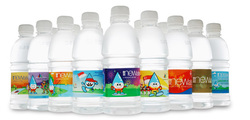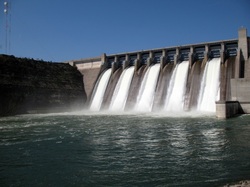 Before Newater is invented: Singapore has been importing water from Malaysia, under two agreements. The first agreement expired in August 2011 and second agreement will expire in 2061.  After Newater is invented: After spending time and money investing on research and technology, we found an integrated, effective and cost-efficient way to solve our water challenges which is Newater. Newater came by which wastewater has been purified through reverse osmosis and microfiltration and ultraviolet technology. The water is able to be consumed by humans hence we will not have much problem in our water supply. Justification Without technology, we might not be able to invent Newater for our own country because we will not be able to purify our waste water into consumable water. Therefore, if we will not be able to invent Newater, our country might have a risk because our water agreement with Malaysia will expire at 2061 and if they do not want to sign a new water agreement with Singapore, we will not be able to have supply of water for us to consume and this will lead to dehydration for citizens and we will not be able to water plants and for animals to drink therefore Singapore will not survive for long. Therefore, technology is one of the main drivers because if without technology, Singapore will not be like now having their own clean water and resources as we need different kind of technology like reverse osmosis and microfiltration to purify the water Bibliography http://www.pub.gov.sg/water/Pages/singaporewaterstory.aspx https://www.google.com.sg/search?q=buying+water&source=lnms&tbm=isch&sa=X&ei=SdfsUtGkOY2tiQfO3YCIBw&ved=0CAcQ_AUoAQ&biw=1017&bih=461#q=water+agreement+singapore&tbm=isch&facrc=_&imgdii=_&imgrc=c-jxmHuBsK1IXM%253A%3BNBRbDy9OmCnZfM%3Bhttp%253A%252F%252F2.bp.blogspot.com%252F-2GlBPsnXA5Q%252FT3wNFxebwpI%252FAAAAAAAAAAs%252FGxZ9FuhK9T4%252Fs1600%252FPUB-and-Hyflux-Sign-Water-Purchase-Agreement-For-Singapores-Second-and-Largest-Desalination-Project.jpg%3Bhttp%253A%252F%252Fvassigeogproject.blogspot.com%252F2012%252F04%252Fhow-singapore-dealt-with-their-water.html%3B298%3B198  Energy Utilization (Solar) Artifact: “Supertrees” at Singapore’s Gardens by the Bay Sunlight is converted to electrical energy when solar panels go through a power inverter to become an alternate current which is electricity. Electricity generated during the daytime can be used right away. The “supertrees” are solar-powered which generates solar power, can act as air venting ducts for nearby conservatories, as well as for collecting rainwater. To generate electricity, 11 of the “supertrees” are fitted with solar photovoltaic systems that convert sunlight into energy, which provides lighting and aids water technology. Solar energy collected by the “supertrees” during the day is then used to light the magnificent structures after night fall. The “supertrees” are made up of (most importantly): 1. Photovoltaic cells – To harvest solar energy for lighting up the supertrees. 2. Cooled conservatories - To serve as air exhaust receptacles. Justification In the past, we do not have anything call “supertrees” for us to help us collect rainwater or generate electricity. But now, we have “supertrees” to help us collect rainwater. Also, “supertrees” helps us to generate electricity so we will be able to save our electricity and money because we pay for our electricity. We generate our electricity from our primary source like fossil fuels and once day, we will run out of fossil fuels and will lead to us not having electricity. Therefore, I think that technology is the key factor to the change of applied science because if without technology, we will not be able to create “supertrees” that will help us in our environment by saving fossil fuels which is one of the way which we can generate our electricity. Without technology, this will not be able to happen. Biblography: http://edition.cnn.com/2012/06/08/world/asia/singapore-supertrees-gardens-bay/index.html http://global.kyocera.com/solarexpo/solar_power/mechanism.html http://www.gardensbythebay.com.sg/en/the-gardens/attractions/supertree-grove.html#!/facts-figures http://www.gardensbythebay.com.sg/en/the-gardens/attractions/supertree-grove.html#!/overview  Though Austria doesn’t have many problems when it comes to being green and environmentally friendly, they have found very unique ways to ensure that their country is going green. The 2010 Winter Olympics were just one place where Austria planted its green footprint. The country built a “passive house” in Whistler, B.C. The passive house doesn’t use cooling or heating systems. In fact, it is self-regulatory and is able to heat and cool when necessary. This happens through a system that was designed keeping air-circulation, thermal heat, and high efficiency windows in mind. It is said that these passive houses use only 10% of the energy used in a common Canadian home. As of now, there are 17,000 of these homes built throughout Europe. There are already 330,000 gardens in Austria and 6,800 of them are natural and Eco-friendly. Most of these gardens contain fruit trees, flowers, and even herbs. There are no pesticides used to treat the gardens; in fact, Austria doesn’t have to put in a lot of effort to keep the gardens looking beautiful. They use natural compost and rely on the rain for a source of water. Photo: Passive House, Whistler BC, blogspot.com. Having Eco-friendly garden, it helps in our environment as there will be lesser air pollution and it will not harm the plants and animals country. Justification I have chosen to research on Eco-friendly gardens around the world, and indeed garden’s by the bay is one of them but I chose to widen my research and chose to study more on the Austria’s eco gardens. Recently, Austria has teamed up with Czech Republic to build more Eco-friendly gardens. Before I proceed on to explain more about the garden, I will briefly like to explain on what actually is ‘Eco-friendly’. Basically being Eco-friendly is to minimize harm to natural world by using biodegradable products. Austria has recently teamed up with Czech Republic to design more Eco-friendly gardens; most of these gardens contain fruits, flowers and even herbs. The most essential thing about these gardens is that there are no pesticides used to treat the gardens; they use natural compost and rely on the rain for the source of water. What exactly are this natural compost, and how effective they are in keeping the plants healthy? Natural compost is organic compounds; which has been decomposed and recycled as a fertilizers and soil amendment. They are the key ingredient in organic farming. The process required to make the compost are heap of wetter organic maters (leaves and ‘green’ food waste) and inputs of water and carbon-nitrogen rich materials. Bibliography http://www.toptenz.net/top-10-greenest-countries.php http://stories.dlvr.it/story/98754 http://en.wikipedia.org/wiki/Compost  HYDRO-ELECTRICITY-POWER à http://www.youtube.com/watch?v=LTbgJ5MzAnI Simple infrastructure to confine water within a space and with the help of technology, it is now being able to generate electricity. From the word itself you’ll know it is using the energy from falling water to operate mechanical devices like watermills, sawmills, textile mills, dock cranes, domestic lifts, power houses, irrigation systems and paint-making. This is ‘hydro-power’. Next is Pumped-storage hydroelectricity (PSH). It stores potential energy from water, pumped from the lower elevation to a higher elevation. During times of low electricity demand, the excess capacity is used to pump water back to the higher reservoir and during high electricity demand, water is released back to the lower reservoir through a turbine. Justification Dam helps us when we need water during dry periods like farming by helping to store and collect water in the river or lakes. It also helps us to prevent flooding in the country and hence helps us to save our buildings and farm properties. Dam also help us improve our living conditions because without a better grow rate and live rate of marine animals, we will not have enough supply of food to survive or enough incomes for us to live in a better place and not suffering. Hence, without technology, we will not be able to build dam. And without dam, we will not be able to improve in our economy state or living condition. References: 1.) http://en.wikipedia.org/wiki/Dam 2.) http://en.wikipedia.org/wiki/Hydropower 3.) http://en.wikipedia.org/wiki/Pumped-storage_hydroelectricity 4.) http://ussdams.com/ussdeducation/Media/Dams%20and%20the%20Environment.pdf |
 RSS Feed
RSS Feed